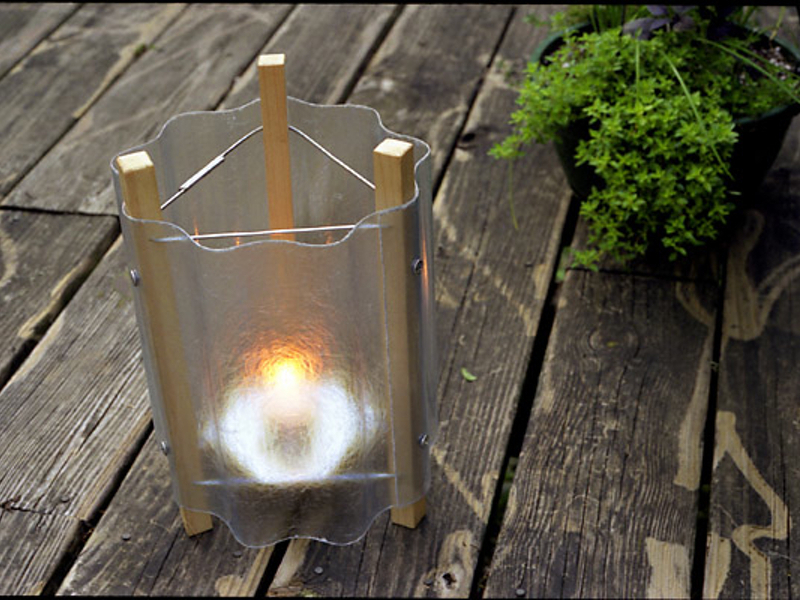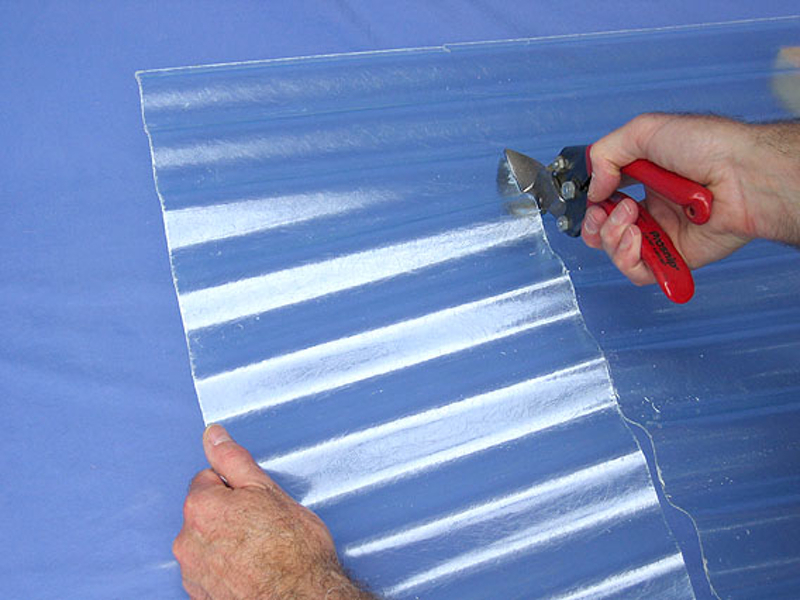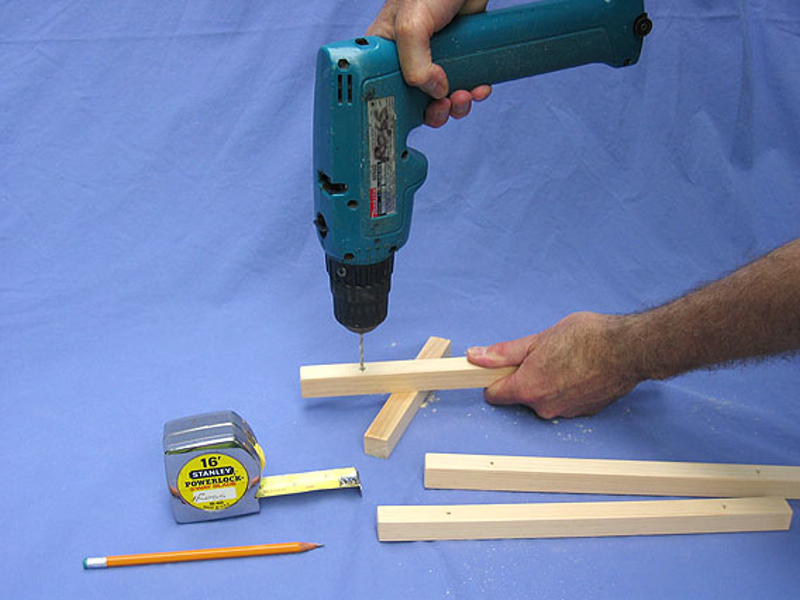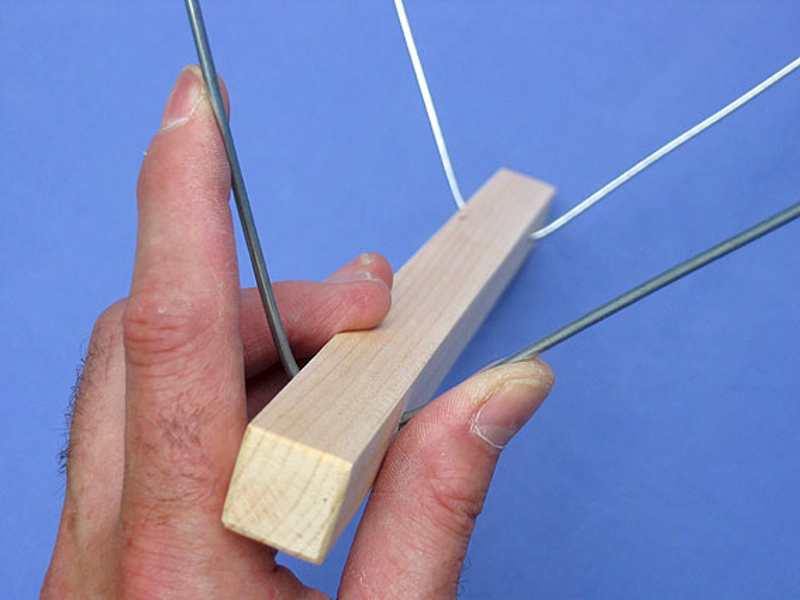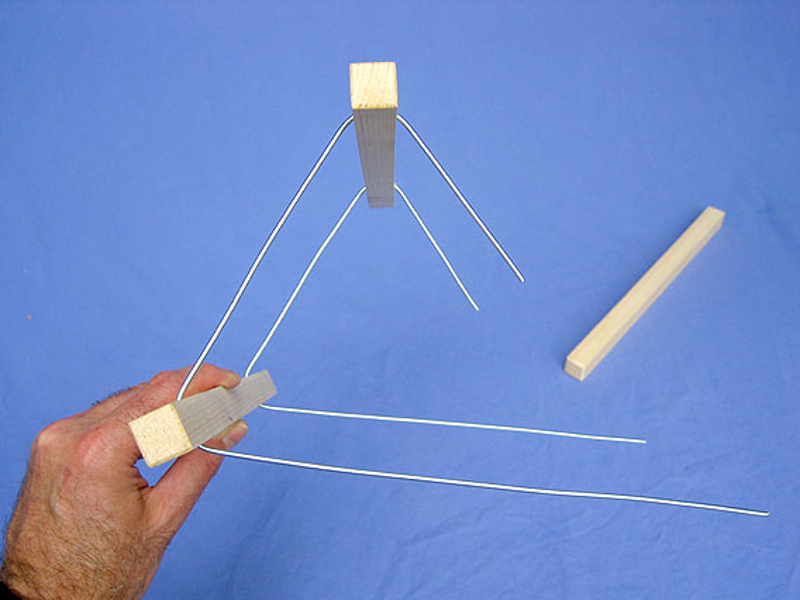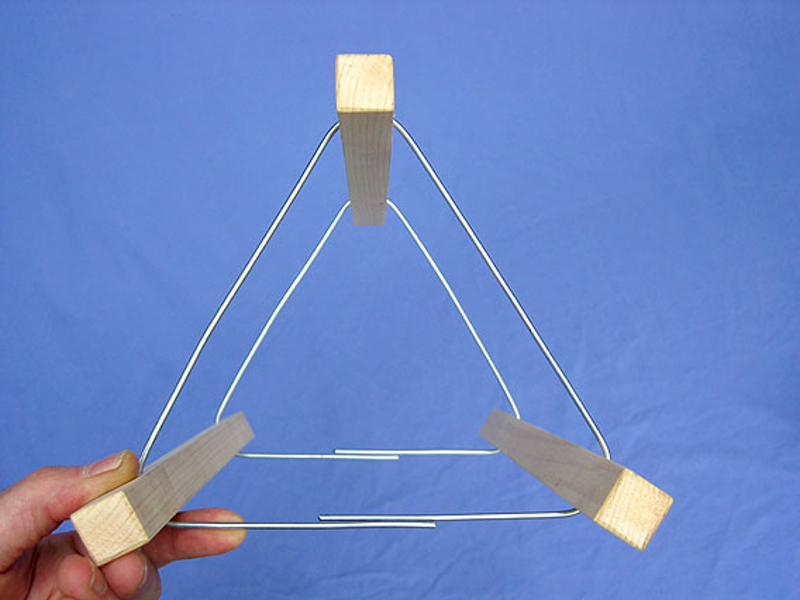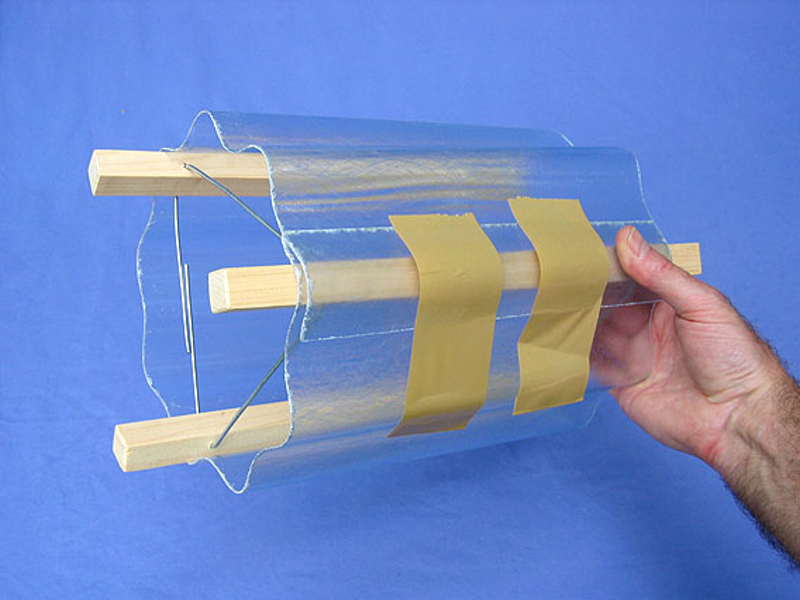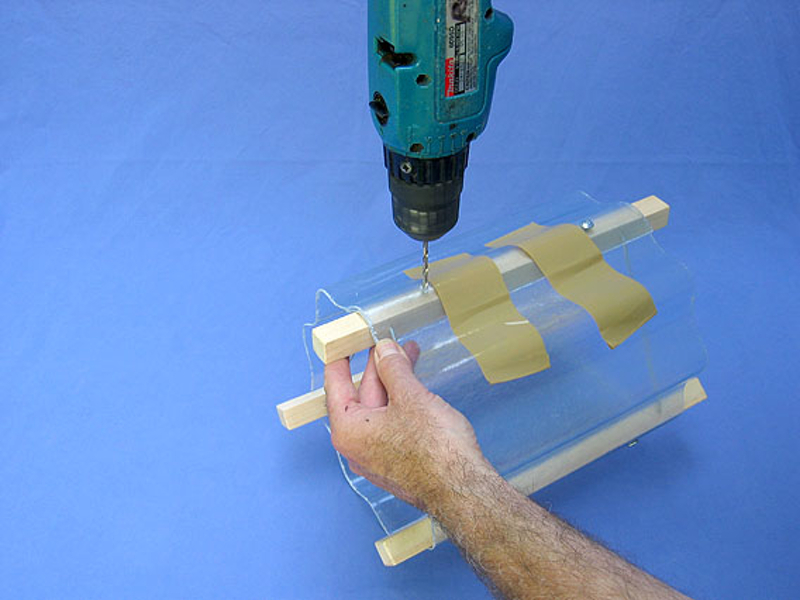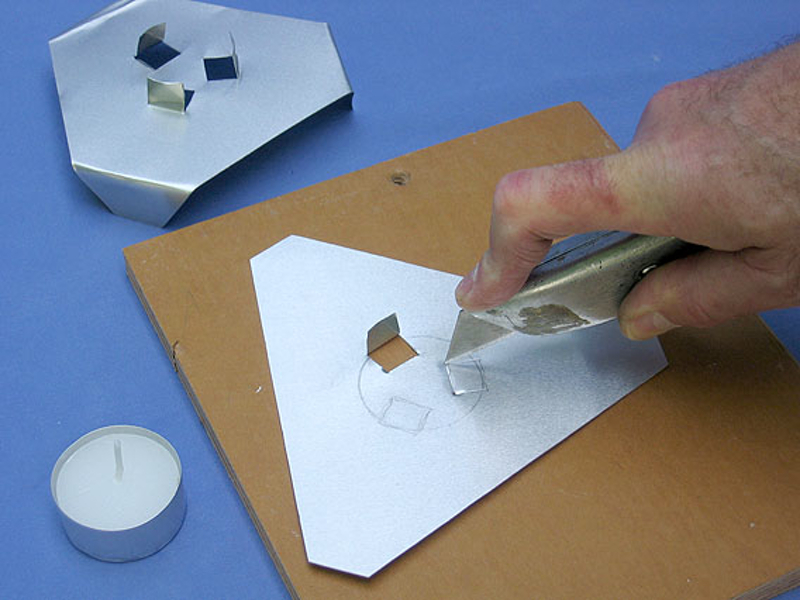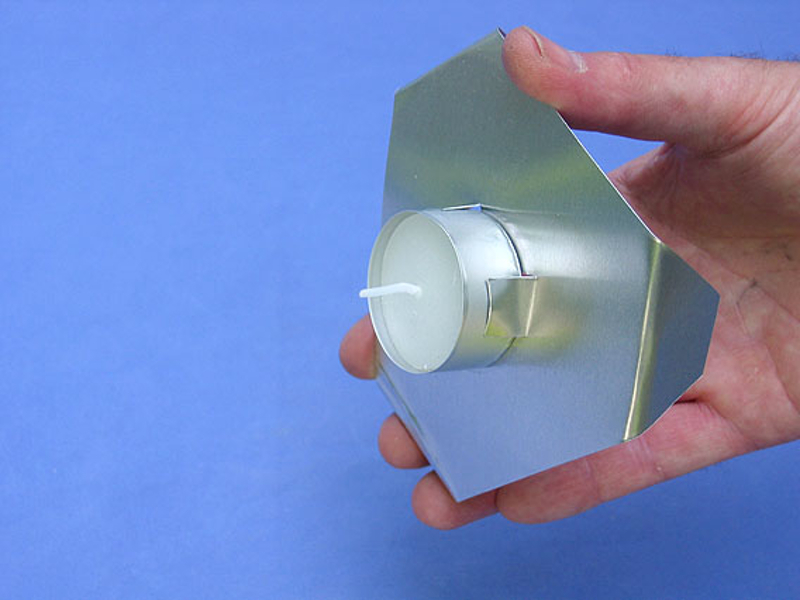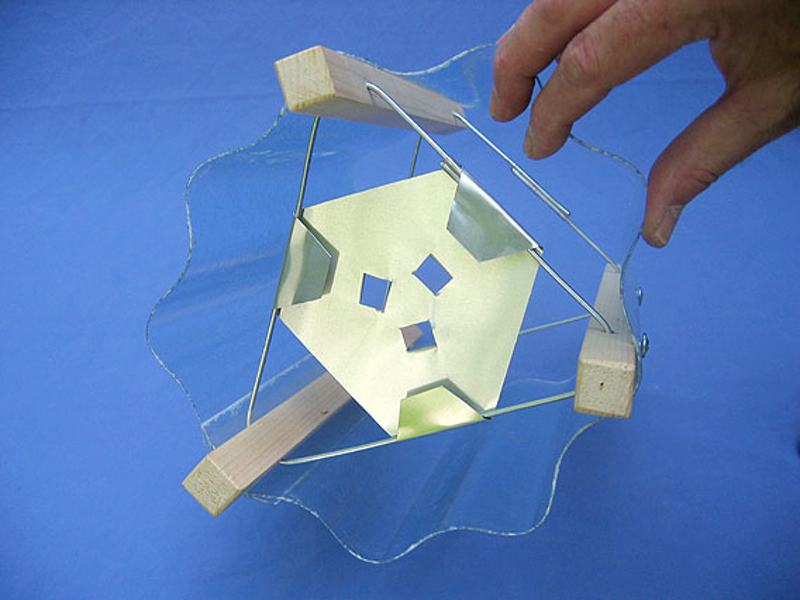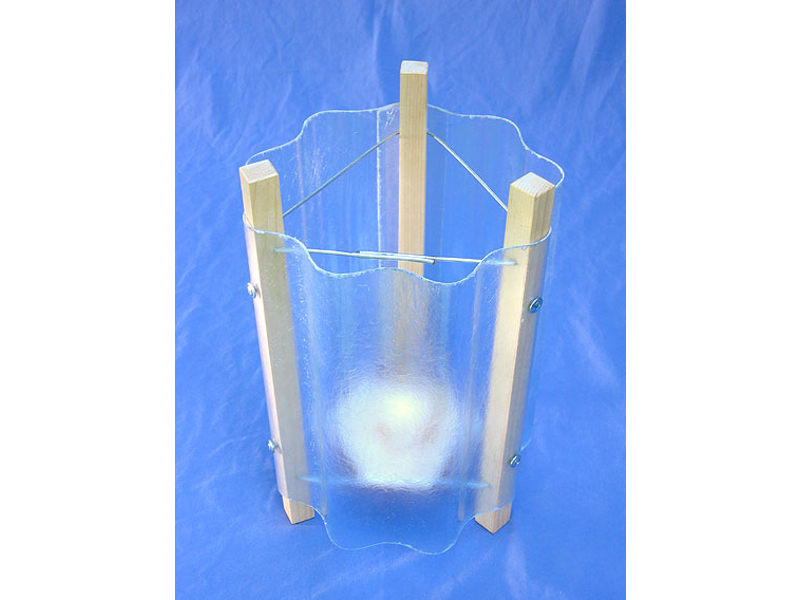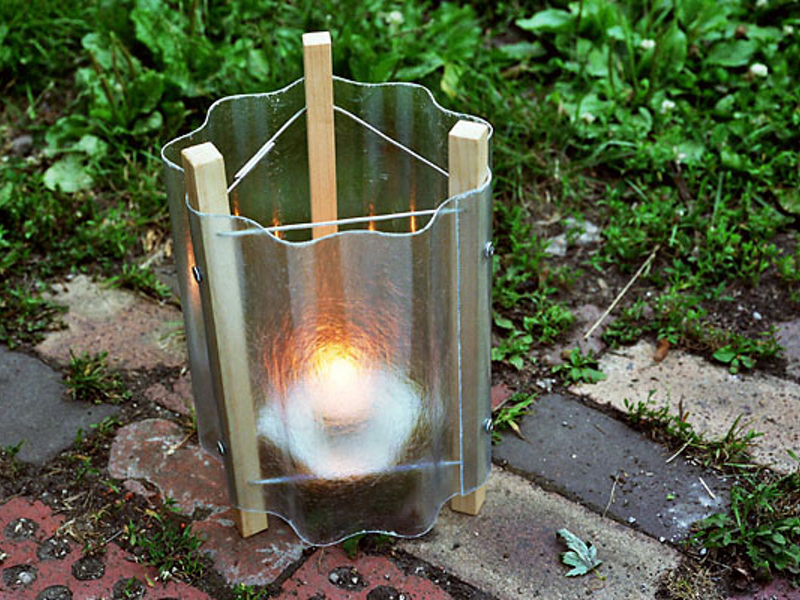A friend of mine recently finished a deck remodel, whose highlight (literally) is a transparent corrugated roof that diffuses sunlight in a delightful way. This inspired me to find some way to continue that glow after sunset, in the form of a lantern illuminated by tea light candles.
There are many colors and styles of corrugated roofing available, and whole 8-foot sheets (Sequentia brand) are $23 at my local lumberyard — that’s enough material for up to 10 lanterns. The kind my friend used for the deck is fiberglass-reinforced plastic (FRP), which diffracts light with a sparkly halo. After some feverish experimenting with cut-off scraps, I eventually came up with the graceful lantern design shown here. In the following steps, proceed carefully so you don’t crack the plastic, which is somewhat brittle.


